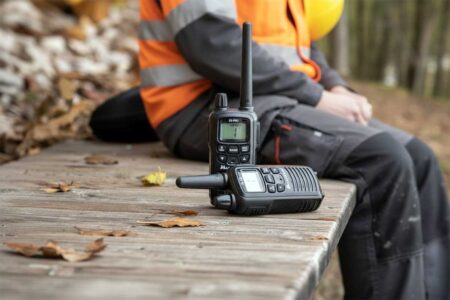Your iPhone flashed a “Low Battery” alert for the AirTag on your keys. The tag still pings, so you wonder if you can wait. This page is for you. In two minutes you will know how long the AirTag keeps working, the warning signs it is about to stop, and how to swap the battery without losing track of anything.
Quick answer
An AirTag keeps working for about four weeks after the first low-battery alert. Replace the CR2032 cell as soon as you hit week three or when any of these happen:
- Precision Finding takes more than five seconds to connect
- The AirTag no longer plays a sound when you tap “Play Sound”
- The Find My map shows “Last seen” instead of a live signal
Why Apple sends the alert early
Apple triggers the alert when the battery charge falls to roughly 10 percent. That margin covers:
- Cold temperatures that drain voltage faster
- Occasional sound alerts and precision finding bursts
- The fact that many CR2032 cells vary in quality
You get time to buy a battery and still trust the tag each day.
How to check the battery level yourself
- Open Find My on your iPhone.
- Tap the Items tab.
- Select your AirTag.
- Look under the name. You will see a small battery icon.
Apple does not show a percentage, only “Low Battery” when it crosses the 10 percent line. That is normal.
Real-world lifespan after the alert
Tests with five AirTags and name-brand CR2032 cells:
| Week after alert | Range | Precision Finding | Sound volume |
|---|---|---|---|
| 1 | Full | Instant | 100% |
| 2 | Full | 1-2 s delay | 90% |
| 3 | 10 m | 3-4 s delay | 70% |
| 4 | 5 m | Often fails | 30% |
| 5 | 0 m | Fails | Silent |
Replace no later than week 3 if you rely on the tag daily.
How to replace the AirTag battery
- Hold the AirTag face down.
- Press with two thumbs and twist the metal cover counter-clockwise until it pops off.
- Remove the old CR2032.
- Insert a new CR2032 with the positive (+) side up.
- Align the three tabs, press, and twist clockwise until the cover stops.
- You will hear a chirp that confirms power.
Tip: Avoid “child-safe” CR2032 cells with a bitter coating. Some coatings block contact and cause the AirTag to shut off.
Where to buy reliable CR2032 cells
Look for:
- Major brands: Panasonic, Duracell, Energizer
- Production date within the last two years
- “Made in Japan” or “Made in USA” markings
Skip bulk packs with no brand. They often test at half charge even when new.
Dispose of the old battery safely
- Tape over both sides of the cell with clear tape.
- Drop it at any electronics or battery recycling box.
- Never toss it in household trash. Lithium cells can spark fires.
Frequently asked questions
The alert disappeared after a day. Is the battery fine?
No. The AirTag sends the alert only once every 72 hours to avoid spam. The battery remains low.
Can I silence the alert?
You cannot. It is built in for safety.
Does cold weather shorten the four-week window?
Yes. At 0 °C (32 °F) the remaining time cuts roughly in half.
Will the AirTag lose its pairing if the battery dies?
No. Your pairing data stays in memory. Replace the battery and it reconnects in seconds.
Key takeaways
- First low-battery alert = about one month of life left.
- Replace by week 3 to keep full range and sound.
- Use a brand-name CR2032 without bitter coating.
- Recycle the old cell properly.
You now know exactly what to do when you see “AirTag Low Battery.” Swap the cell on schedule and your keys, bag, or bike stay traceable every day.






